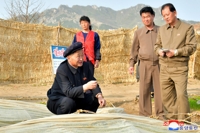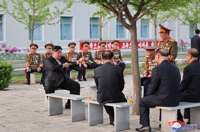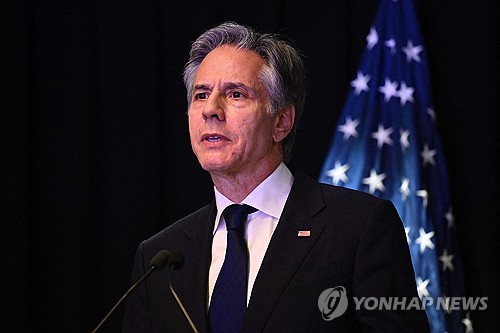(News Focus) N. Korea's SLBM drive aimed at regime survival, military edge, negotiation leverage: analysts
By Song Sang-ho
SEOUL, Oct. 20 (Yonhap) -- North Korea's drive to develop submarine-launched ballistic missiles (SLBMs) appears aimed at sharpening its military edge to ensure the security of the dynastic regime and bolstering leverage for future nuclear talks, analysts said Wednesday.
The North test-fired a new type of SLBM on Tuesday, after flaunting several seaborne missiles during last week's defense exhibition and others at military parades earlier this year and last year -- in a move highlighting its steadfast focus on the submarine-based delivery vehicle.
The latest launch came as Seoul, Washington and Tokyo crank up their trilateral engagement to strategize on incentivizing Pyongyang to return to dialogue through humanitarian aid and assurances of "no hostility" toward the recalcitrant regime.
The saber-rattling also followed the North's derision of a recently unveiled South Korean SLBM as a "rudimentary, toddling-stage" weapon -- a reaction that observers said underscored the regime's growing wariness over its military stature dwarfed by the evolving South Korea-U.S. alliance.
"North Korea seems to be increasingly anxious and leery, as the South has been pushing for conventional yet formidable weaponry with the destructive power approximating that of nuclear arms, which raises uncertainty over the North's pursuit of a military balance or superiority," said Nam Chang-hee, professor of international politics at Inha University.
"A military inferiority that could follow the erosion of the North's military edge could undermine the legitimacy of North Korean leader Kim Jong-un. The North could, in fact, feel the security threat," he added.
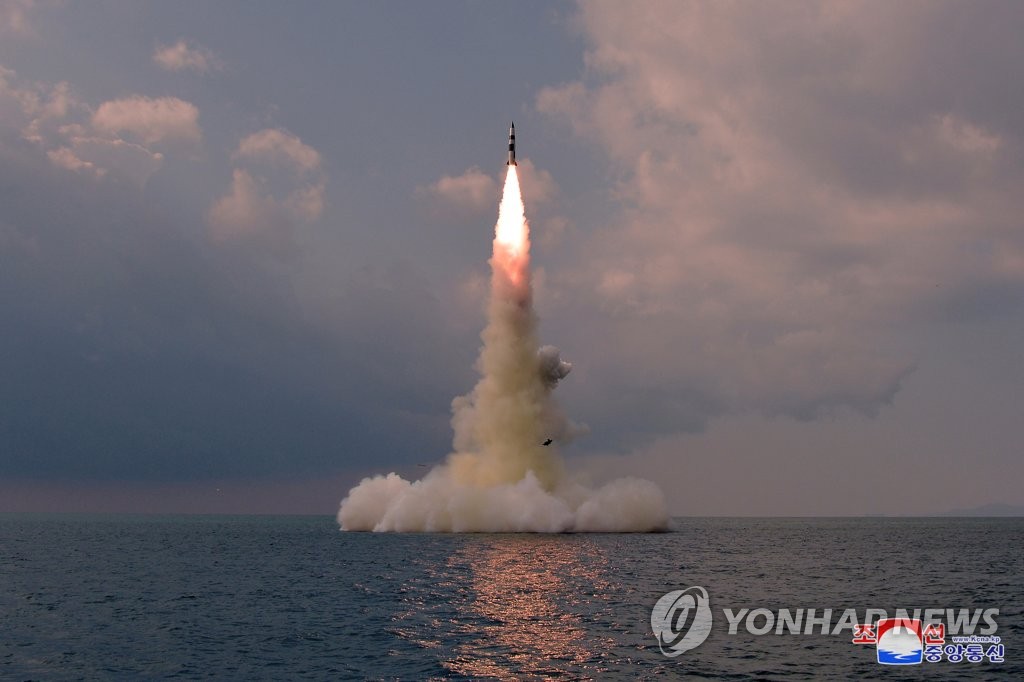
This photo, released by North Korea's official Korean Central News Agency (KCNA) on Oct. 20, 2021, shows a submarine-launched ballistic missile (SLBM) being fired in waters off the east coast the previous day. (For Use Only in the Republic of Korea. No Redistribution) (Yonhap)
Indeed, Seoul and Washington have been beefing up their own high-tech weapons marked by greater accuracy, lethality and agility.
To counter the North's threats, the South has pushed to introduce not only the SLBM but also other high-tech weaponry, including longer-range missiles.
Earlier this month, the U.S. military showed off a powerful bunker buster bomb capable of destroying underground facilities like those in the North.
This week's missile launch appears to represent progress in the North's SLBM program, as the North claimed the missile was fired from a submarine rather than a barge or a ground platform -- an indication it has inched closer to the operational deployment of an SLBM.
The North's Academy of Defence Science test-fired the SLBM, into which "lots of advanced control guidance technologies, including flank mobility and gliding skip mobility, are introduced," the Korean Central News Agency reported.
The North's push for the development of SLBMs has spawned speculation that it is seeking to secure the menacing "second-strike" capability in order to respond to a nuclear attack with nuclear retaliation.
The SLBM is a bedrock asset for the second-strike capability as a submarine carrying it can operate undetected, launch counterstrikes and thus allow a country to survive an enemy's preemptive attack.
The SLBM is part of the formidable "nuclear triad" consisting of three key delivery vehicles -- intercontinental ballistic missiles (ICBMs), SLBMs and strategic bombers, which major nuclear powers like the United States possess.
"I think the SLBM is specifically a second strike deterrent against regime change," said Patrick M. Cronin, chair for Asia-Pacific Security at the U.S.-based Hudson Institute, claiming the North Korean leader is motivated by "fear and insecurity" but also a "thirst for power and legitimacy."
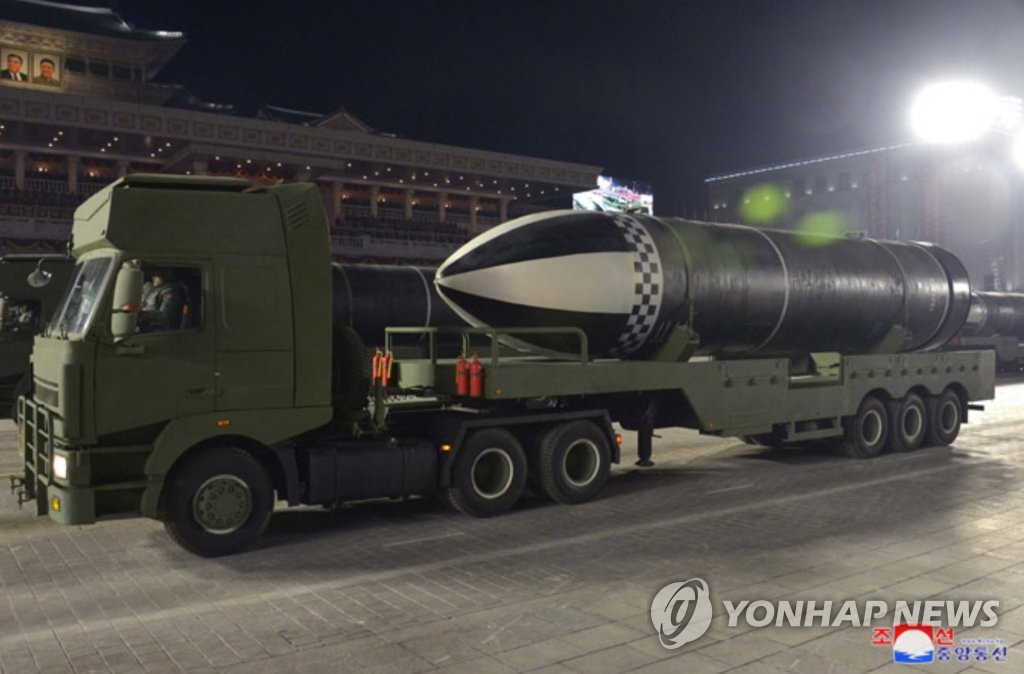
This photo, captured from the website of North Korea's official Korean Central News Agency, shows what appears to be a submarine-launched ballistic missile unveiled on a vehicle during a military parade in Pyongyang on Jan. 14, 2021. (For Use Only in the Republic of Korea. No Redistribution) (Yonhap)
Some observers said the North's pursuit of the SLBM program could be part of its broader strategy to keep American forces at bay, undercut the U.S. nuclear umbrella and eventually decouple the South Korea-U.S. alliance.
Should the North fully develop its SLBM program and roll it out for combat operations, the U.S. could fear potential SLBM strikes and thus hesitate to come to the aid of its ally, South Korea, in the event of an attack -- a scenario that could put the bilateral alliance in jeopardy.
The North's latest SLBM launch also followed its call for the South and the U.S. to remove their "double-dealing standards," in reference to the allies referring to the North's missile launches as "provocations" while rationalizing their own as "deterrence."
In response to the launch, South Korea expressed "deep regrets" but stopped short of calling it a "provocation."
Undeterred by the latest show of force, South Korea doubled down on its efforts to bring the North back to the dialogue table.
Seoul's top nuclear envoy, Noh Kyu-duk, and his U.S. and Japanese counterparts -- Sung Kim and Takehiro Funakoshi, respectively -- met in Washington this week to explore joint efforts to resume nuclear diplomacy with Pyongyang through humanitarian aid and other support.
The nuclear envoys particularly discussed President Moon Jae-in's renewed proposal for the declaration of a formal end to the 1950-53 Korean War, which Seoul officials describe as an effective confidence building measure.
Analysts presumed that Tuesday's SLBM launch might be partially intended to push the South and the U.S. to propose more concrete incentives to pave the way for the North's return to dialogue.
"The North might have intended to strengthen its bargaining power to secure concessions, such as sanctions relief," professor Nam said.
sshluck@yna.co.kr
(END)
-
 'Queen of Tears' weaves rich tapestry of Korean contemporary art
'Queen of Tears' weaves rich tapestry of Korean contemporary art -
 Ateez member Yunho throws first pitch at MLB match between Dodgers, Mets
Ateez member Yunho throws first pitch at MLB match between Dodgers, Mets -
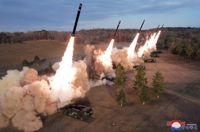 N. Korea says Kim guided simulated nuclear counterattack drills for 1st time
N. Korea says Kim guided simulated nuclear counterattack drills for 1st time -
 N. Korea calls envisioned U.S. aid to Ukraine 'hallucinogen'
N. Korea calls envisioned U.S. aid to Ukraine 'hallucinogen' -
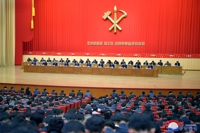 N. Korea calls on party propaganda officials to work harder
N. Korea calls on party propaganda officials to work harder
-
 'Queen of Tears' weaves rich tapestry of Korean contemporary art
'Queen of Tears' weaves rich tapestry of Korean contemporary art -
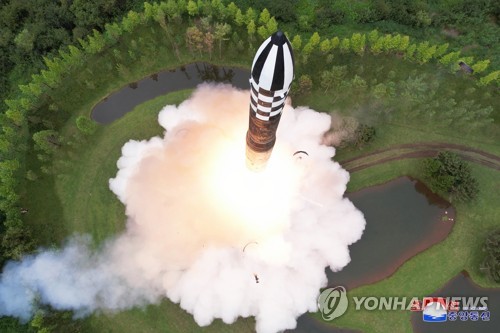 Experts see possibility of N.K. conducting nuclear test before U.S. presidential vote
Experts see possibility of N.K. conducting nuclear test before U.S. presidential vote -
 Details of meeting between Yoon, opposition leader undecided: presidential office
Details of meeting between Yoon, opposition leader undecided: presidential office -
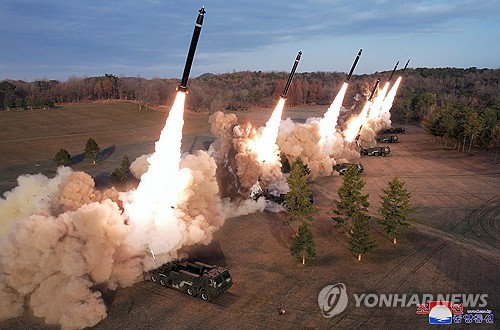 N. Korea says Kim guided simulated nuclear counterattack drills for 1st time
N. Korea says Kim guided simulated nuclear counterattack drills for 1st time -
 Looming weekly closure of major hospitals feared to worsen medical service crisis
Looming weekly closure of major hospitals feared to worsen medical service crisis
-
 S. Korea eliminated in Olympic football qualifiers as poor defense, undisciplined play prove costly
S. Korea eliminated in Olympic football qualifiers as poor defense, undisciplined play prove costly -
 Indonesia coach left with mixed feelings after eliminating native S. Korea in Olympic football qualifiers
Indonesia coach left with mixed feelings after eliminating native S. Korea in Olympic football qualifiers -
 10-man S. Korea lose to Indonesia to miss out on Paris Olympic football qualification
10-man S. Korea lose to Indonesia to miss out on Paris Olympic football qualification -
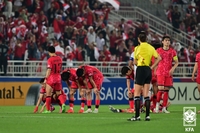 (LEAD) 10-man S. Korea lose to Indonesia to miss out on Paris Olympic football qualification
(LEAD) 10-man S. Korea lose to Indonesia to miss out on Paris Olympic football qualification -
 ADOR CEO calls conflict with Hybe 'worst experience of my life'
ADOR CEO calls conflict with Hybe 'worst experience of my life'
















